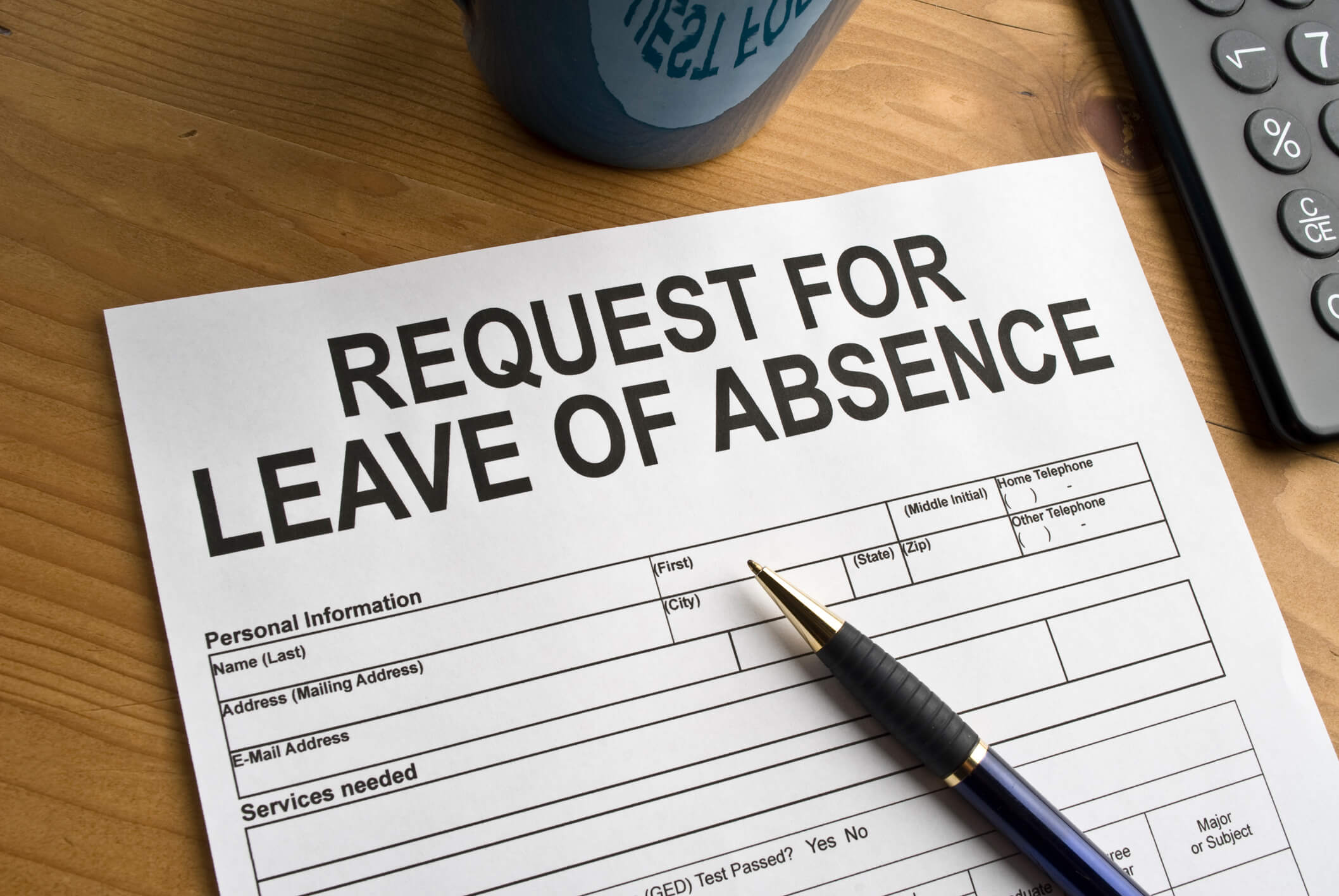In this installment of our Workplace Strategies Watercooler 2025 podcast series, shareholders Heather Ptasznik (Detroit (Metro)), Dalton Green (Raleigh), and Burt Garland (St. Louis) discuss the most challenging aspects of leave management—with a particular focus on navigating the Family and Medical Leave Act (FMLA). Heather, Dalton, and Burt tackle the most common pain points in leave administration, including what frontline managers should listen for and how HR can proactively manage the process to minimize legal risks. The speakers answer the most common questions on managing the FMLA, covering topics such as what constitutes proper notice, chronic condition certifications, tracking intermittent leave, training for managers, keeping up with regulatory changes, and more.
Workplace Strategies Watercooler 2025: FMLA Unpacked—Advanced Leave and Compliance Issues

Transcript
Announcer: Welcome to the Ogletree Deakins podcast, where we provide listeners with brief discussions about important workplace legal issues. Our podcasts are for informational purposes only and should not be construed as legal advice. You can subscribe through your favorite podcast service. Please consider rating this podcast so we can get your feedback and improve our programs. Please enjoy the podcast.
Heather Ptasznik: Welcome to today’s podcast. I am Heather Ptasznik, here with my colleagues, Dalton Green and Burt Garland. As a follow-up to our Workplace Strategies session here in Las Vegas, on the FMLA Unpacked: Advanced Leave and Compliance Workshop. We heard a lot from our attendees, HR professionals, as well as in-house counsel, that navigating FMLA continues to be one of the most challenging aspects of leave management. Between chronic conditions, certifications, intermittent leave tracking, manager training, and keeping up with regulatory changes, it is a lot to juggle. In today’s conversation, we are going to tackle some of the most common pain points from what frontline managers should listen for to how HR can proactively manage the process and reduce legal risk.
Dalton, one of the recurring challenges we hear from HR professionals is figuring out what actually qualifies as notice under the FMLA. So, let’s talk a little bit about that. What does an employee have to say or not say to trigger the FMLA? For example, if an employee says, “I need a mental health day,” is that enough? And from a practical standpoint, what are some tips or best practices for HR teams and managers in recognizing what a seemingly casual statement might have legal significance under the FMLA?
Dalton Green: That’s a great question, Heather. It’s got a lot of practical implications for employers and how to administer the FMLA. There’s really no bright-line rule regarding what an employee must say to provide sufficient notice under the FMLA. The standard’s really just whether the employer’s been provided with sufficient information that it knows or should know that the reason for the absence is covered under the FMLA. That’s what makes it so hard for employers.
Please know that in the event that you do take an adverse action against an employee on the basis of failure to adhere to an attendance policy, the courts are going to want to know why you did not recognize that this employee might have had an FMLA-covered condition. And how do I know that? Because I know, because I’ve previously defended and am currently defending those lawsuits. Savvy plaintiff’s attorneys are asking these questions. They are filing these complaints, and it’s very important to recognize these kinds of patterns on the front end so you don’t have to defend them on the back end.
So, going back to the situation that you just proposed, the question an employee coming to you and saying, “I need a mental health day.” It’s a very good question. It’s a very vague statement. In and of itself, it’s probably not going to be enough to put the employer on notice that there may be an FMLA-covered situation. However, if you pair that statement with some additional information, like knowledge that the employee is actively seeking treatment or has a history of a mental health condition, that might be enough to put the employer on notice that the mental health day absence and any absence that comes thereafter might be covered under the Family Medical Leave Act. If you take it another step further and look at a pattern of absences that the employee might have sustained over a period of time combined with behavior at work that might suggest mental health issues or some other FMLA-covered condition, that could be additional information that a savvy plaintiff’s attorney might suggest had put the employer on notice.
And then you get to the other end of the spectrum where things become much more black and white and the employee makes a statement such as, “I’m going to have surgery next week,” and then it’s undeniable that the employer has received sufficient information that the employee is going to be going out on an absence that’s covered under the Family Medical Leave Act. And in between those two ends of the spectrum are innumerable situations that fall into the gray area. And that is why it’s so important to train your frontline supervisors and managers so they can recognize the potential triggers and just not overlook these situations, and instead elevate the situations to HR so they can further assess the situation and start the FMLA process if it is, in fact, indicated.
Heather Ptasznik: Thank you, Dalton. So, since HR and legal teams often rely on those frontline managers to be the eyes and ears in the workplace, Burt, can you tell us what some of the key red flags or phrases are that supervisors should be listening for that might signal the need to reach out to HR to start the FMLA process, and how does a company ensure that managers know when to escalate those issues to HR?
Burt Garland: Those are great questions, Heather, and we talked about those yesterday during the program. And one of the things that we introduced to people during the program yesterday was an FMLA manual. That manual contained several checklists, one of which is a frontline supervisor’s and manager’s checklist.
In every area of labor and employment law, one of the things we always stress is the notions of consistency and fairness. And so, talking about consistency and frankly fairness, we don’t want our frontline managers and supervisors all running around trying to administer the FMLA on their own, because if they do that, we are going to end up in a situation where we have a lot of different people doing a lot of different things with respect to FMLA. It’s hard enough administering the FMLA if you’re thoroughly trained on it. If you’re not thoroughly trained on it, it presents opportunities for liability exposure if things are not done properly. So, again, we don’t want those frontline managers and supervisors trying to administer the FMLA, but we want to make sure that they understand what they must do, the signals that they look for, and when to get HR involved.
And so, under this checklist, we make a statement that literally says, “You must contact the company’s human resources department if any of the following circumstances arise.” And so if an employee indicates that the employee has been absent or will be absent from work for any of the following reasons, you want to contact the company’s HR department.
And so, you want those frontline supervisors to know that if they hear an employee talking about the birth of a son or daughter or to care for a newborn child, if you hear them talking about placement with the employee of a son or daughter for adoption or foster care, if you hear the employees talking about caring for the employee’s, spouse, son, daughter or parent with a serious health condition, if you hear the employee talking about the serious health condition of that employee that makes the employee unable to perform the functions of his or her job, or if you hear the employee talking about a covered family member’s active duty or call to active duty in the National Guard or Reserve in support of a contingency operation, or finally if you hear the employee talking about that they have to care for an injured or ill covered service member or veteran, you as the supervisor when you hear any of those things, you need to know enough to get the issue right to HR.
Continuing on, if you hear that the employee is absent from work for three or more consecutive calendar days, again, contact the company’s HR department. If the frontline supervisor hears that the employee has indicated that the employee will be absent from work for more than three consecutive calendar days, again that frontline supervisor should contact the company’s HR department. And if the employee has indicated that the employee has been absent or will be absent from work for several or periodic visits to a healthcare provider over an extended period of time, contact the company’s HR department. The company’s HR department, they’re going to be better equipped to administer the FMLA in a fair and consistent manner, thereby providing the employees their rights under the FMLA while ensuring that the company is protected from missteps under the FMLA.
So, long answer to your fairly short question there, but these are steps that help the employer mitigate risk under the FMLA.
Heather Ptasznik: So, thank you, Bert. So, once the employee and employer have started that FMLA process, sometimes we see medical certifications that come to HR’s attention. So, let’s talk about that a little bit, Dalton. One of the most confusing areas for HR, and even legal teams, is understanding when and how employers can reach back out to a healthcare provider for clarification about information in the FMLA medical certification form. What can an employer do, and what crosses the line, and how does this differ from what an employer might be able to do under the ADA?
Dalton Green: Sure. That’s a really good question because it is really different. There are a lot of limitations on what the employer can do in terms of contact with the employee’s physician under the FMLA. So, the employer can contact the physician under the FMLA for very, very limited purposes, and it’s basically only to obtain clarification or authentication, and definition of clarification is very narrow also. It’s really like if you can’t read what the certification says or you don’t understand it, or if you’re not sure if, you can’t read the signature or you’re not sure if the signature is authentic. It does not mean you can write the doctor a long letter and engage in a dialogue to discuss whether or not you can engage in a back and forth about the wisdom of the certification or the duration of the predicted absence. That is not the purpose of clarification under the FMLA.
Furthermore, under the regulations, the employer is only allowed to reach out to the healthcare provider after providing the employee with seven days to cure any deficiencies in the certification in the first place. So, it’s very limited. Whereas under the ADA, the employer is allowed much more discretion in terms of being able to reach out to the doctor, and it really is an interactive process. So, the employer has much more discretion. And it’s very important that the employer not confuse the type of contact that they’re allowed to have with the healthcare providers because it is quite different, not only under the FMLA and the ADA, but also workers’ compensation laws differ by state. And often workers’ compensation statutes have limitations on the type of ex parte contact that employers can have with an employee’s healthcare provider as well. So, it can get very tricky.
Heather Ptasznik: Thanks, Dalton.
Dalton Green: Sure.
Heather Ptasznik: So, Burt, we’ve all heard that joke that the FMLA really stands for the Friday Monday Leave Act, and there’s no doubt that HR professionals are increasingly seeing patterns that raise red flags, like repeated absences around weekends and holidays. So, let’s talk about that a little bit. When an employer starts to notice potential patterns of abuse, what tools are actually available under the FMLA to address it? Are there any specific documentation strategies, certification requirements, or recertification timelines that can help manage abuse without stepping over legal lines?
Burt Garland: Yeah, so in addition to the Friday Monday Leave act, I came up with another one yesterday during our presentation, and I think it’s the Fraudulent Migraine Leave Act because migraines seem to be one of the most troublesome aspects for our clients when dealing with the FMLA.
So, yes, there are some things that you can do to try to gain control over intermittent leave. First of all, not everyone is eligible for intermittent or reduced schedule leave. You have to make sure that the employee’s serious health condition, that they do in fact have a serious health condition for themselves or the serious health condition of a family member. Employers are not required to grant intermittent or reduced schedule leave for birth or adoption. So, it’s really only for those limited circumstances of the serious health condition of the employee or the employee’s family member.
The thing I think that’s most important in this area is that if you see an employee who is exceeding what their certification says is going to be the likely need for intermittent leave, if the certification, for example, specifies that the person may be out two times per month because of their chronic condition because of their migraines, and each episode may last up to four hours, if you see the employee is out multiple times per week, two, three times per week and not just twice per month, and when they’re out two to three times per week, it’s on a very unpredictable schedule, it’s not just four hours at a time, it might be full days at a time, you, as the employer, have the right to have the employee obtain a new certification or a recertification, as the case may be, to cover those additional absences and that pattern that you might be seeing. So, that’s probably first and foremost. I would suggest that you make sure that the person’s use of the intermittent leave is consistent with what the certification says.
Some other things that you can do, if you suspect that there’s potential fraud in the use of the FMLA, you want to make sure that you request a recertification every six months. This is allowed even if the original certification covers more than six months. And so, you do have the opportunity to request a new certification after the first six-month certification. If the minimum duration of the certification is for longer than 30 days, an employer has to wait until that minimum duration expires before requesting recertification. And then again, employers are always permitted to require recertification every six months, so long as it coincides with the FMLA-related absence.
The other thing I think I’d offer out there, Heather, is that sometimes you have an employee who has a certification for one health condition, and they start using that same certification for another health condition, and the FMLA does not allow that. If they suffer from a second health condition, and in particular that second health condition is requiring them to take intermittent leave, you have the right to request the employee obtain a new certification for that second health condition.
So, those are a couple of the strategies that we use to try to rein in potential abuse of intermittent FMLA leave. I would say anytime you suspect abuse of intermittent FMLA leave, you should definitely involve your legal counsel in the discussion on how you’re going to try to rein this in, what steps you might take. I joked yesterday during the program that social media, as much as we may not like social media in certain aspects, it’s been a real boon for employment defense attorneys because it’s amazing sometimes what you’ll find employees out there doing when they’re claiming that they’re really on intermittent FMLA leave, or frankly not even an intermittent FMLA leave and just a full-blown periodic FMLA leave, and we catch them out there going to sporting events, participating in sporting events, doing heavy yard work, things that they’re not supposed to be doing while they’re on FMLA. So again, these are things that you can do to try to mitigate FMLA abuse in the workplace.
Heather Ptasznik: Some great insight. Thank you, Bert.
Burt Garland: Sure.
Heather Ptasznik: So, I want to talk a little bit about healthcare benefits because this is a critical area where both HR and employees can get tripped up. While an employee is out on FMLA leave, the employer is required to maintain their healthcare benefits at the same level. If the employee fails to pay their share of the employee premiums, the employer can take action. But there are some very specific notice requirements that must be followed prior to terminating coverage that are set forth in the FMLA regulations, so you can’t pull the trigger too quickly.
And if the employer chooses to pay the employee’s premium because there’s no paycheck coming in during an unpaid leave of absence and the employee does not return to work at the conclusion of the FMLA, the employer can recover the premium payments that they paid on behalf of that employee unless the reason the employee did not return to work was related to the FMLA. However, it might be difficult to go after that employee and to recover those premiums. However, there is that opportunity to do so.
FMLA compliance is rarely black and white, and it really just comes down to spotting the signals, asking the right questions, and staying consistent with responses. Whether you are in HR, legal, or leadership, staying proactive and informed is your best defense. We thank you for listening and remember what in doubt document and communicate, and hopefully we will see you next year at Workplace Strategies where we can talk about some more FMLA issues.
Announcer: Thank you for joining us on the Ogletree Deakins podcast. You can subscribe to our podcasts on Apple Podcasts or through your favorite podcast service. Please consider rating and reviewing so that we may continue to provide the content that covers your needs. And remember, the information in this podcast is for informational purposes only and is not to be construed as legal advice.
Topics

Leaves of Absence/Reasonable Accommodation
Managing leaves and reasonably accommodating employees can be complex, frustrating, and expose employers to legal peril. Employers must navigate a bewildering array of state and federal statutes, with seemingly contradictory mandates.





